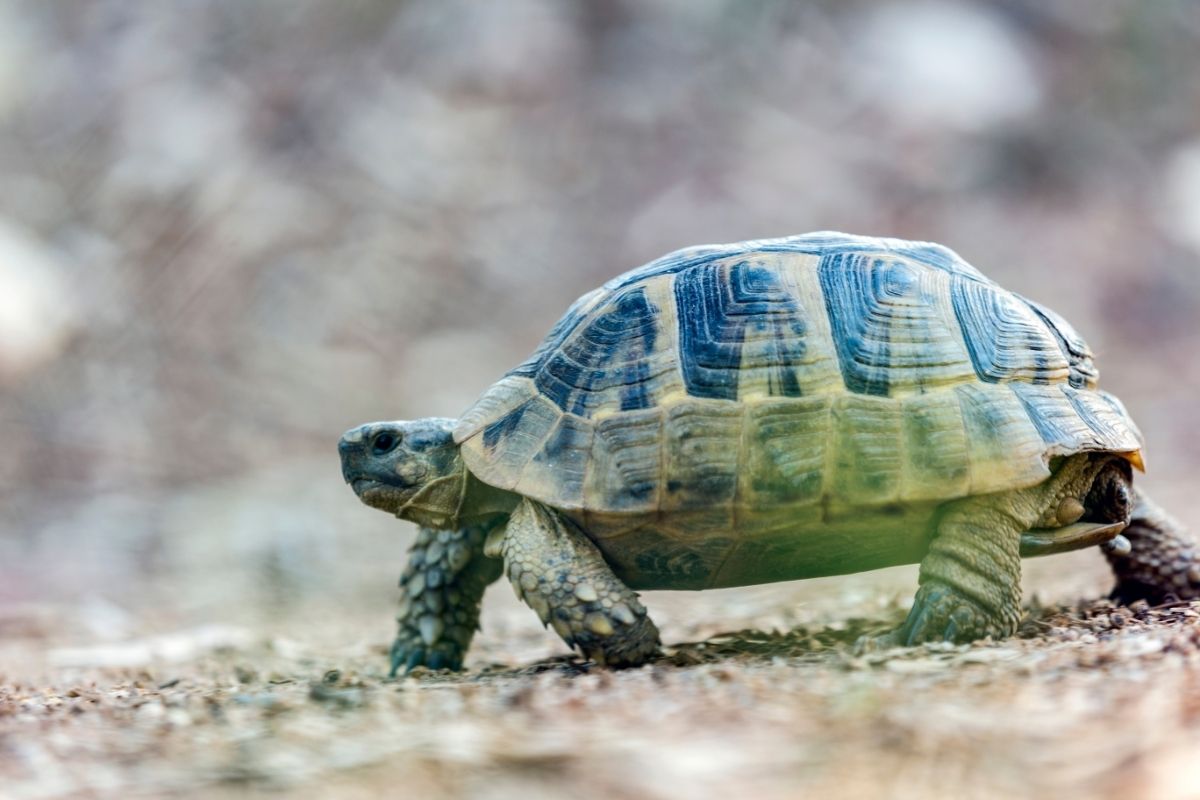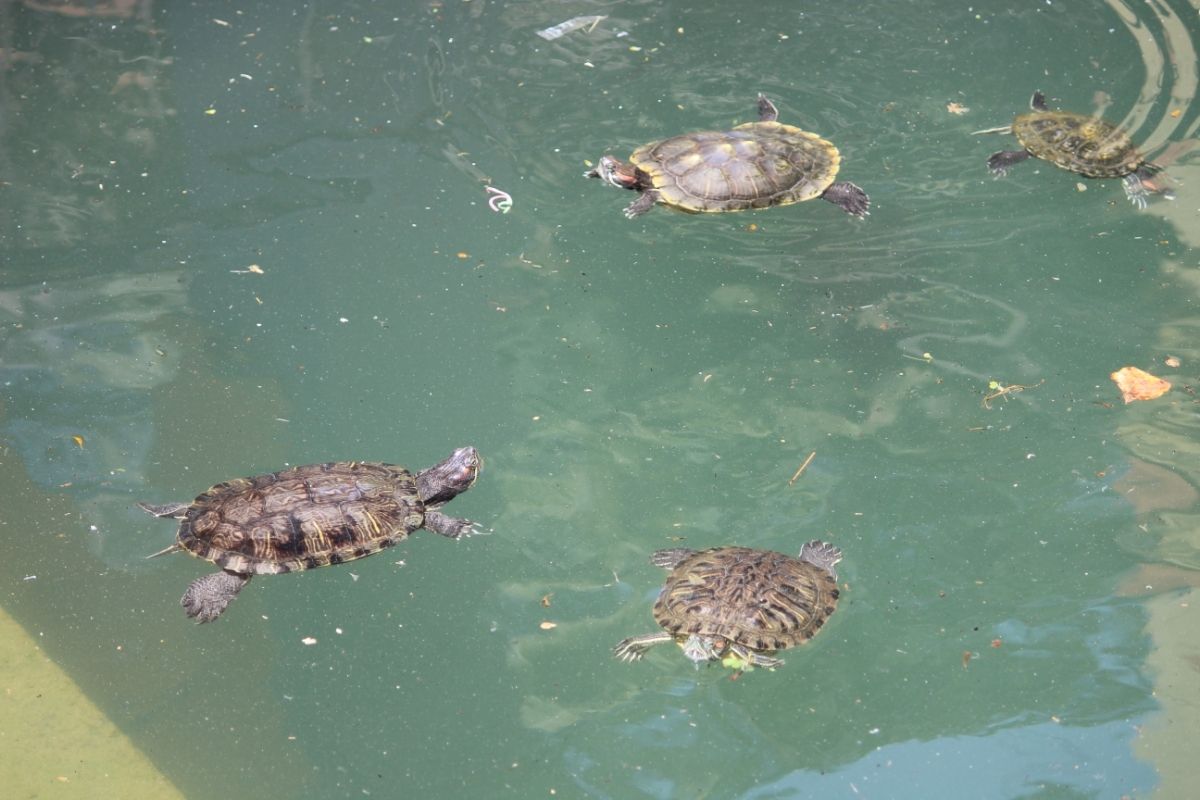Turtles and tortoises are so similar, but there is a major difference between them that people may be unaware of.
As turtles swim, but tortoises don’t, it is important to know the difference between them as you could be causing a lot of harm to a tortoise that you place in the water to swim.

As they are so similar, why do turtles swim, but tortoises are unable to? This article will help you to explore the reasons why turtles can swim and how tortoises differ.
This article will also help you to identify the difference between these 2 reptiles, so there are no dangerous mix-ups.
Find out more about the reasons why turtles swim but tortoises don’t, so you can begin to understand the difference between them. So you can keep them out of danger that could potentially be fatal.
The Reasons Why Turtles Swim And Tortoises Don’t
As turtles and tortoises are very similar to look at, we usually assume that they live very similarly.
However, as tortoises do not swim, it can be extremely dangerous for them to be thrown into the water after being mistaken for a turtle.
To avoid this potentially fatal situation, you must be able to recognize the difference between turtles and tortoises.
Shells
One of the main differences when looking at turtles and tortoises are their shells. You may not have noticed before, but if you look closely, you will see that turtles have flat shells that are streamlined.
The streamlined shells help them to swim and move quickly in the water.
In comparison, tortoises have heavier shells that are very rounded. As the shells are heavy, they are unable to help the tortoise swim as they would struggle to carry the weight.
Also, as the shell is round, it isn’t streamlined, meaning that the tortoise would struggle to swim as they wouldn’t be able to remain stable or move fast.
Feet
Another easy way that you can identify the difference between turtles and tortoises is their feet. Turtles have flippers that help them to swim in the water.
Having flippers allows the turtles to swim quickly, as flippers are more streamlined than feet. The flippers make it easier for them to move in the water and remain stable.
On the other hand, tortoises have bent legs and feet that are very similar to elephants’ feet, just on a smaller scale.
Their legs are bent, making it easier for them to hold up their heavy shell, so they are not designed for swimming. Their feet and legs allow them to remain safe out of the water.
Do Tortoises Drown In Water?
When tortoises are mistaken for turtles and thrown in the water, they are very likely to drown as they are not made for swimming.
If you have a pet tortoise that accidentally makes its way into a shallow pond, you can quickly get the tortoise out of the water as the pond is shallow, and there is less risk of drowning.
However, if a tortoise is thrown into the ocean, there is a good chance that it will drown. As they are not built for swimming, tortoises will struggle to get out of the ocean as it is too deep for them to swim in.
Having a shallow pond that the tortoise can walk in is safe, but anything too deep is dangerous for them to be around on their own.
Will Tortoises Always Drown?
Although tortoises are extremely likely to drown when thrown into deep water, some tortoises survive.
Tortoises can sometimes survive in deep waters for longer than expected due to their ability to hold their breath for a very long time. This skill has saved tortoises from drowning on many occasions.
Do Tortoises Enjoy Swimming?

As they know that they are not built for swimming, wild tortoises avoid deep water as they know that they will struggle to get back to dry land.
Although they know they cannot swim well, wild tortoises enjoy bathing in shallow water.
The water needs to be shallow enough for the tortoise to bathe in without them struggling to get back to land, so you may see tortoises relaxing in shallow waters now and again.
If you own pet tortoises, you may notice that they enjoy shallow bathing as well. You can bathe them in shallow water either in a bathtub or a mini paddling pool, but you must never leave them unattended.
If you leave your tortoise unattended and they tip over into the water, they may drown. This is why it is important to never leave your tortoise unsupervised in water.
Are Tortoises Able To Float?
If you have seen images of tortoises floating, you may assume that all tortoises can float. However, this is not the case.
As tortoises have heavier shells than turtles, this makes them less likely to float in the water and more likely to sink.
The age of the tortoise and the water conditions can also factor into how likely the tortoise is to float on the water.
If the conditions of the ocean are right for the tortoise to float in, they may be able to wait until they float toward dry land.
However, large waves and heavy shells will make it very difficult for the tortoise to survive.
Are Baby Tortoises Able To Swim Well?
Baby tortoises are more at risk of drowning in water than adult tortoises.
This is because they are not able to swim, but also because they are unable to hold their breath for as long as adult tortoises, as their lungs are not as big.
As they cannot hold their breath for long and they are unable to swim, this puts them at risk of drowning.
However, baby tortoises enjoy bathing and drinking in shallow water, but they need to be careful that they do not fall in.
If you have a baby tortoise as a pet, you will need to make sure that your tortoise is never left alone in the water.
If they tip over, they will be more likely to drown, so you must watch them in the water at all times.
Can My Tortoise Swim In My Pool?
Not all tortoises enjoy being around water, so you mustn’t force your tortoise into the water when it doesn’t want to go in.
However, if your tortoise does enjoy the water, you can supervise them in a pool. It is advised that you get into the pool with the tortoise and help them in the water to avoid drowning.
Before putting your tortoise in the pool, you will need to make sure that the pool is non-chlorinated.
Chlorine is not good for animals, so you will need to make sure that there is no chlorine in the water.
If the water is chlorine-free, then you can see if your tortoise fancies a dip in the pool!
Final Thoughts
To conclude, some obvious physical characteristics allow you to easily tell the differences between a turtle and a tortoise.
You will need to look at the shape of their shells and their feet to tell the difference between them to avoid putting them in dangerous situations when you are trying to help them.
As tortoises cannot swim, you must always supervise them when they are in the water to avoid drowning.
Even if the water is shallow, you will need to watch them in case they tip over and drown.
Watching your tortoise in the water will help them to stay happy, healthy, and enjoy their time in the shallow water!
Frequently Asked Questions
Why Are Turtle-Shells Flat?
Turtle shells are flat, allowing them to be more streamlined in the water. Being more streamlined means, they can move quickly and easily in the water to catch their prey and catch up for breath.
Is It Normal For Tortoises To Like Water?
Tortoises enjoy bathing in shallow water, but some dislike any water at all. Some tortoises love the water, so it depends entirely on the tortoise that you have.
If your tortoise loves water, you just need to make sure that you supervise them at all times to avoid any fatalities.
